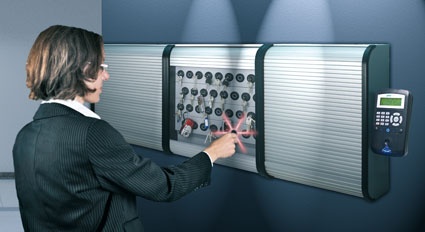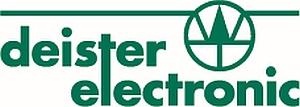Under Lock and Key
Keys are used to control access to so many things these days that there can be serious consequences when one is misplaced or has been taken without authority. Managing who is autho...

Keys are used to control access to so many things these days that there can be serious consequences when one is misplaced or has been taken without authority. Managing who is authorized to take and use keys, and indeed knowing who currently has possession of a particular key, is traditionally left to one person who makes corresponding entries in a handwritten log. A product from deister now provides the opportunity to make the whole process more secure and less labor-intensive.
Where is the digital camera? Who's been using the company car? When was the technician last in the building? Where‘s the key to the server room? These important questions can now be answered by the proxsafe, an intelligent management system for keys and objects of value. It provides optimum management of keys, a vehicle fleet, small cameras, mobile phones and tools. It can also complement an access control system by providing a cost-effective way of expanding an electronic security management system to doors that are still secured by a conventional mechanical lock and key.
A durable electronic tag is attached to each key or valuable object by using a one-time, self-locking seal. The tubular tag has a unique number that is identified each time it is removed from and returned to the cabinet. All user activities from all terminals and cabinets are gathered and stored in a central database, providing a full audit trail for later evaluation when required.
Grows with the Task
A basic cabinet has positions for up to 32 keys, each assigned its own permanent position. Should there be a requirement for more keys to be securely stored, the system can be expanded by simply adding further cabinets. Many thousands of items can be electronically controlled in this way. Keeping track of so many keys would normally be a full-time task. The proxsafe management system keeps a record of which key is taken, when and by whom. Users gain access to the electronic safe by using their chip-based proximity card, a PIN or both and are immediately identified. Information about usage rights is stored in the terminal, enabling self-service to authorized items. When the required key has been selected, it is highlighted for quick location by the illuminated cylinder surrounding the tag. When returning the key, the user simply presents the tag to the reader in order to gain access to the system, which helps to prevent delays at busy times.
Secure from All Points
When not currently in use, an automatic self-locking shutter door closes in front of the keys to guard against unauthorized access. This is however sensitive to obstructions so there is no danger of fingers getting caught. The key tags use RFID transponder technology to provide a unique identification of the key or item. They are compact, sealed and water-resistant and will not corrode. The designers chose to use a key tag without any electrical contacts and this avoids any problems of grease, dirt or contamination affecting the ability to read the key tag. The contact-less concept also extends to the users who, by using a chip-based proximity card, gain access to the system quickly, conveniently and securely. The proxsafe commander management system supports all current credentials including mifare, Legic, HID, proxentry and other technologies. This enables it to be integrated over a network into other systems via the open deBUS communication protocol. Security personnel therefore always have an overview of which items are currently in use and by whom.
Invaluable Experience
Deister electronic was established in 1977 and is well-known in the security market. One of its strong points is radio frequency identification, and the company specializes in the design, manufacture and distribution of products using RFID-technology. Users of their systems include telecommunications providers, police fleet management officers, household technology manufacturers, engineering firms as well as city administrations.














